Hair loss forms
Some of the most usual types of hair loss are:
-
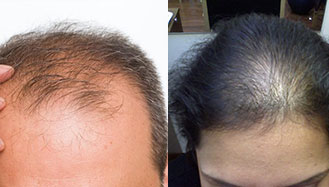
Male/female pattern hair loss
Male and female pattern hair loss is genetically inherited. In men it manifests with recession of the hairline at the temples and thinning of the crown, while in women ususlly hair loss occurs over the entire scalp, in a diffuse pattern. In women generally the hair line is preserved, while in men is not and temporal area is typically the first place of hair loss. The type of hair loss, diffuse or patterned, it's important to be diagnosed properly because it will impact over the type of treatment: medically (for diffuse hair loss), or by hair transplant surgery (for patterned hair loss).
-
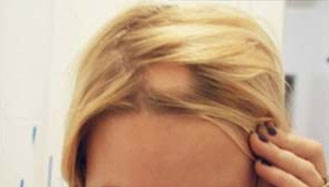
Alopecia Areata
Generally thought to be an autoimmune disorder. For unknown reasons the imune system attacks the hair folicle area, but without permanent damage. Cause "patchy" hair loss in small circular areas in different areas of the scalp. In time, the hairs may grow again, within 6 months to 5 years. Can be treated with the help of a dermatologist and it responds quite well to local injections of cortico-steroids and minoxidil (2-5%).
-
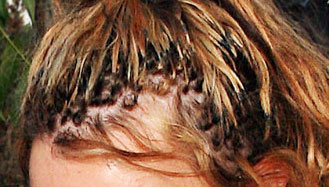
Traction Alopecia
Hair loss caused by physical stress and tension on the hair: constant pulling on scalp hair through braiding, tight clips or hair systems.
-
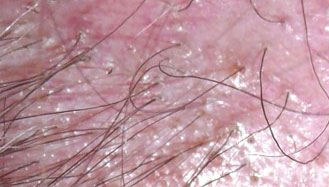
Lichen Plano-pilaris
Lichen Planopilaris is a skin disease that causes skin inflammation to the hair follicles and can lead to permanent scarring.
It manifests as papules (bumps) on the skin, whith the following characteristics:
- - redish purple or white and shiny
- - skin-colored or erythematous patches of alopecia that are a few millimeters to a few centimeters in width
- - often can cause itchyness, tenderness, discomfort
Treatment should be applied early as no hairs that have been lost and replaced by scarring can be replaced afterwards. Treatment can slow progression of the disease and relieve symptoms and hair loss may continue, although at a slower pace.
-
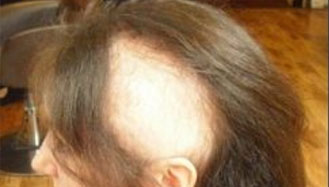
Trichotillomania
Trichotillomania is a mental disorder that involves an irresistible urge to pull out hair, to the point of large patches of hair loss. Usually the hair is pulled from the scalp, eyelashes, and eyebrows. If trichotillomania is suspected, the person might be refered to a psychiatrist or psychologist.
-
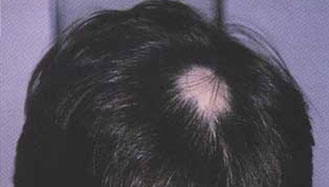
Pseudopalade
Is a form of patchy hair loss resembling alopecia areata. Hair loss usually occur in patchens on the crown or in places where the hair naturally parts. At first it may seems the hair is just thinning, but over time the result is completely bald areas. Pseudopelade is much more common in young women and the risk of developing it subsequently decreases with age.
-
Hair loss after Face-lift & Brow-lift Procedures
Hair loss can occur after face/brow/neck lifts. This can happen because the incisions and skin tension can sometimes affect the blood flow. Oftentimes general anesthesia and/or the "stress" of surgery can lead to generalized hair loss. In both cases it is possible that the hair loss can stop and hair can regrow.
-
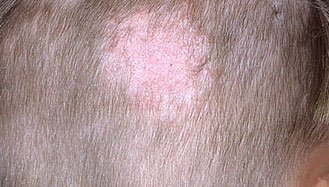
Tinea Capitis
Tinea Capitis or Ringworm of the scalp often looks like round, bald patches. As infection spreads, the inside of the circle clears up and so this makes the infection look like a ring, which gives the name of the pattern. Ringworm is caused by a fungus that grows on the skin. It can be spread through direct contact, hats, brushes, on clothing, sports equipment, so personal hygiene is important in preventing the spread of ringworm. A dermatologist can prescribe an efficient treatment for this type of infection.
-
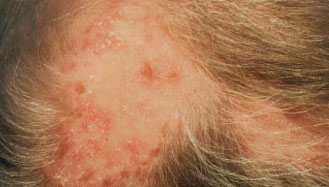
Discoid Lupus Erythematosus (DLE)
DLE predominantly affects adult women. Patients typically complain of patchy hair loss associated with pruritus, burning, or stinging. Because the hair loss is potentially reversible, prompt diagnosis and aggressive treatment is crucial, to prevent scarring.
Ask more!
Ask a medical representative a question about hair transplant:
Latest news
-

Transplant procedures can be somewhat painful mainly due to local anesthesia using injections into the scalp. But new procedures do not involve needles
-

Hair transplantation can be performed at any age, technicaly, but probably in many cases doctors recommend patients to wait up to an age close to 30 years.
-

-

Depending on the method used for harvesting grafts, recovery time can vary from a few days (FUE method) to 1-2 weeks (FUT or STRIP method)
-

Very important rules for a healty transition after hair transplant surgery.
-

What technique? FUE or STRIP? Advantages and disadvantages of each.
Latest forum posts
-
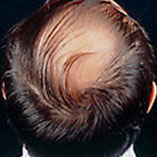
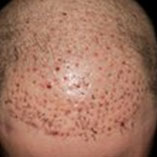
In the forums section you can receive informed answers (including from a medical representative) about hairtransplant issues, products or services of interest to you. Just ask!

